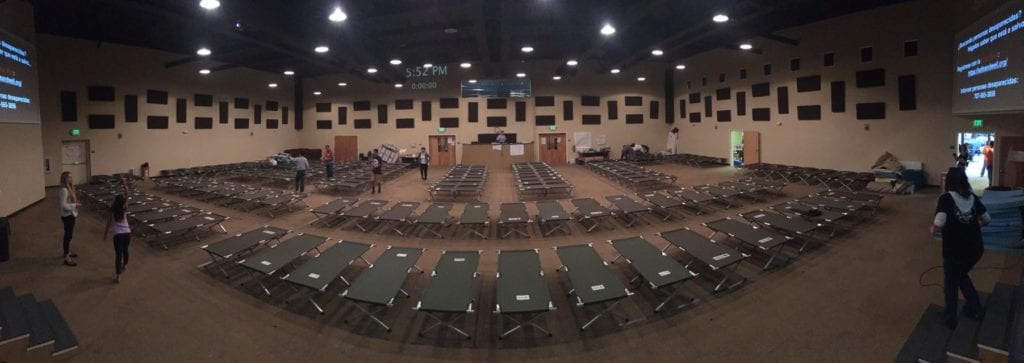
Think about the times in your life when you have had the most vision and clarity on issues of importance. Likely, these haven’t come when you’ve been soaring high, soaking in an overflow of resources, everything at your fingertips.
No, most likely, if you are like me, you’ve noticed a trend that our clearest moments of thinking often come during times of less and loss—when we are running on empty and at the end of our resources.
One of the things I have experienced is that scarcity brings clarity. It’s during times of scarcity when I have also learned that I am the most effective leader. Scarcity forces us to consider options both in vision and strategy that we may not have necessarily seen before. We become more effective and efficient both in the short and the long term.
Scarcity forces clarity and from scarcity, we can actually retool an organization so that it is more effective and remains more focused in times of abundance. Prioritization is important at every moment, but prioritization is life-preserving in times of scarcity.
Prioritization is important at every moment, but prioritization is life-preserving in times of scarcity.
I remember when I came to the Billy Graham Center at Wheaton College three years ago. At the time, to quote my boss, the Center was “on life support.” Instead of closing shop, we asked three key questions:
- What could we best do?
- What should we be doing?
- What could only we do?
Our focus narrowed on a priority: gathering global leaders for greater gospel impact. Then we began to measure everything we did on the basis of our focus. In doing so, we became what Mr. Graham hoped we would become—a world hub of mission and evangelism.
Had it not been for that time of scarcity, we would not have been forced to assess clearly what we were working toward and discover how to best accomplish our goals.
Scarcity is rarely enjoyable to lead through. But when we understand these times as possible game-changers, we can actually discover that these are the times that change both us and our organizations.
Scarcity is rarely enjoyable to lead through. But when we understand these times as possible game-changers, we can actually discover that these are the times that change both us and our organizations.
Times of scarcity don’t always last, however, and they should lead to change and growth. To maximize our time as leaders during these scarcity moments, let me offer a few tips.
1. During times of scarcity, we must remember that we still have tools and resources to work with.
Look around and consider what you do have to work with. Who is there? What is your history? What tools do you have available? In these times, we must work exceptionally well with what we have. We must properly prioritize how we utilize our resources—whether those be money, people, time or property—for a more focused end goal.
2. Scarcity forces us to reevaluate where we are and where we are headed.
Perhaps our organization has tried to do too much. Perhaps we have lost focus of our end goal in an effort to grow and achieve great things. In times of plenty, it’s often difficult for organizations to see how off track they’ve gotten until it’s nearly too late to turn the ship around. This is why, for example, IBM doesn’t sell computers today. Once the leading provider of computers, IBM withered away because it was engaged in so many areas of work. Today, however, IBM is much more intentionally focused.
3. Scarcity causes us to look to other places for other resources.
We begin to see that it’s not all about us and we find creative ways to work together and to get what needs to be done accomplished. Too often, as organizations grow, they develop a mindset that begins to shut others out. Ever so slowly, silos develop, and the concept of shared resources and partnership are lost for the sake of greater growth. Scarcity allows us to look around and consider what others are doing and see potential for partnership that we otherwise would not have noticed.
If you are in a time of scarcity as an organization, don’t despair. Use this time as a transformation opportunity to take you and your team to the next level.


 The GLS brought me into contact with internationally known speakers, whose books I read and whose thoughts shaped the condition of my heart and the quality of my leadership. They were movers and shakers—prominent women and men—who were sharing their hard-earned lessons on leadership. That was a game-changer: a woman in a male-dominated profession serving in hostile conditions.
The GLS brought me into contact with internationally known speakers, whose books I read and whose thoughts shaped the condition of my heart and the quality of my leadership. They were movers and shakers—prominent women and men—who were sharing their hard-earned lessons on leadership. That was a game-changer: a woman in a male-dominated profession serving in hostile conditions.
 After the fire was brought under control, local officials ran training for shelter managers, because our entire community had been so unprepared. One thing they drilled into us was the importance of the registration table and how, in a disaster, early accounting of people is crucial.
After the fire was brought under control, local officials ran training for shelter managers, because our entire community had been so unprepared. One thing they drilled into us was the importance of the registration table and how, in a disaster, early accounting of people is crucial.

Recent Comments